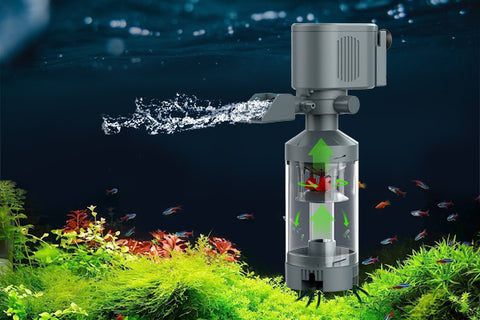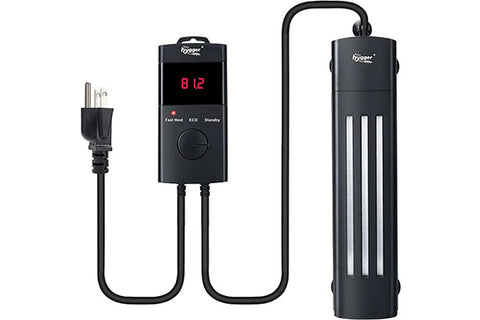A 75-gallon fish tank can be used to house different types of fish in your home, but you should know that there are certain things to keep in mind before buy one.
It's important to know the standard dimensions of a 75-gallon fish tank, as well as what the proper setup should be to keep your fish healthy and safe. We will discuss all these things in this article.
Dimensions of a 75-gallon fish tank
Owning a fish tank can be a lot of fun, but it's not just about dropping in the fish and seeing them swim around the glass enclosure. You'll have to do your homework to make sure you pick out the right tank that meets your fish's needs and looks good in your home or office space.
To help with this decision, here are the dimensions of an average 75-gallon fish tank and what makes this tank size ideal for setting up your home aquarium or office fish pond.
75-gallon fish tank size
If you’re looking to set up an aquarium, you’ll want to know two things: one thing is how much room do you have? And the other is what kind of fish are you looking to keep.
Three main measurements determine your tank size: height, width, and length. If you plan on going with an American standard aquarium (i.e., in gallons), a 75-gallon tank will be 48 inches in length by 18 inches in width by 21 inches in height( L×W×H=48”×18”×21”).
Weight
An empty 75-gallon fish tank weighs around 140 lbs. And when it is filled with fish, basic types of equipment like filter, heater, and decorations then it weighs around 850 lbs.
In addition to ensuring that your flooring can support such a load, make sure there’s enough space for everything.
Necessary equipment for a 75-gallon tank
Water filter
A water filter is an essential part of any aquarium setup. Since most aquariums do not come with built-in filtration, you will need to purchase one separately.
The size of your filter depends on how many gallons your tank holds and what type of fish you plan on keeping.
For example, a 75-gallon tank would require a filter that can handle that amount of water per hour. You should also consider whether or not you want a hang-on back (HOB) or internal filter.
Lighting system
As our aquariums get larger and we want to accommodate more species, it is important to note that light is one of your greatest limiting factors. You must have adequate lighting to successfully keep plants or corals in your 75-gallon fish tank.
The more light you give your aquarium, the better off your aquatic life will be. Just make sure not to go overboard with anything over 3 watts per gallon; otherwise, you'll cook your inhabitants from all that extra heat.
Heating system
The required size of an aquarium’s heater is generally determined by its depth. 75-gallon tanks require at least a 75-watt heater, and no heater with greater than 150 watts should be used on any aquarium larger than 75 gallons.
Deep tanks also require more powerful heaters, because the water near their bottom will be colder than that near their top.
Decorations and accessories
There are tons of different types of aquarium decorations that you can choose from. Your main focus should be on those that will enhance your viewing experience, like live plants and artificial plants, rocks, driftwood, shells and sand for substrate.
Decorations like these will provide more hiding spots for your fish and make them feel more at home in their new environment.
Conclusion
When you're determining what is the size of your aquarium, think in terms of gallons and length. The most common dimensions for a 75-gallon fish tank are 48”×18”×21” ( L×W×H).
The larger size is better if you want more room for more than one large fish, while a smaller tank can be used as a quarantine area.
In addition to your main tank, consider adding smaller tanks and make sure not to overcrowd your main tank with too many other tanks or bowls. It's also important to remember that bigger isn't always better.
If you go overboard in space, it's harder to maintain proper water conditions and keep your fish healthy.






Comments (0)
Back to Supplies & Equipment